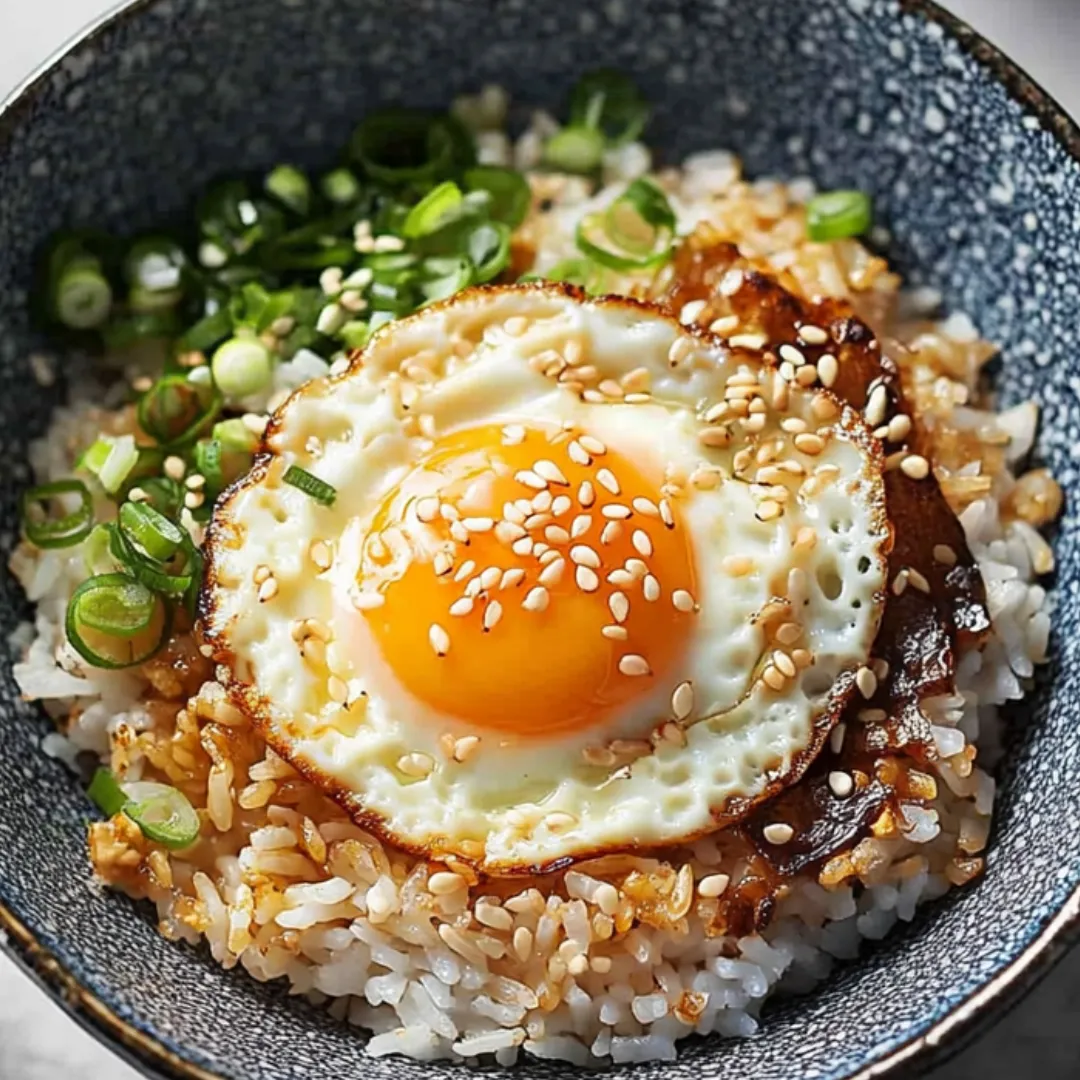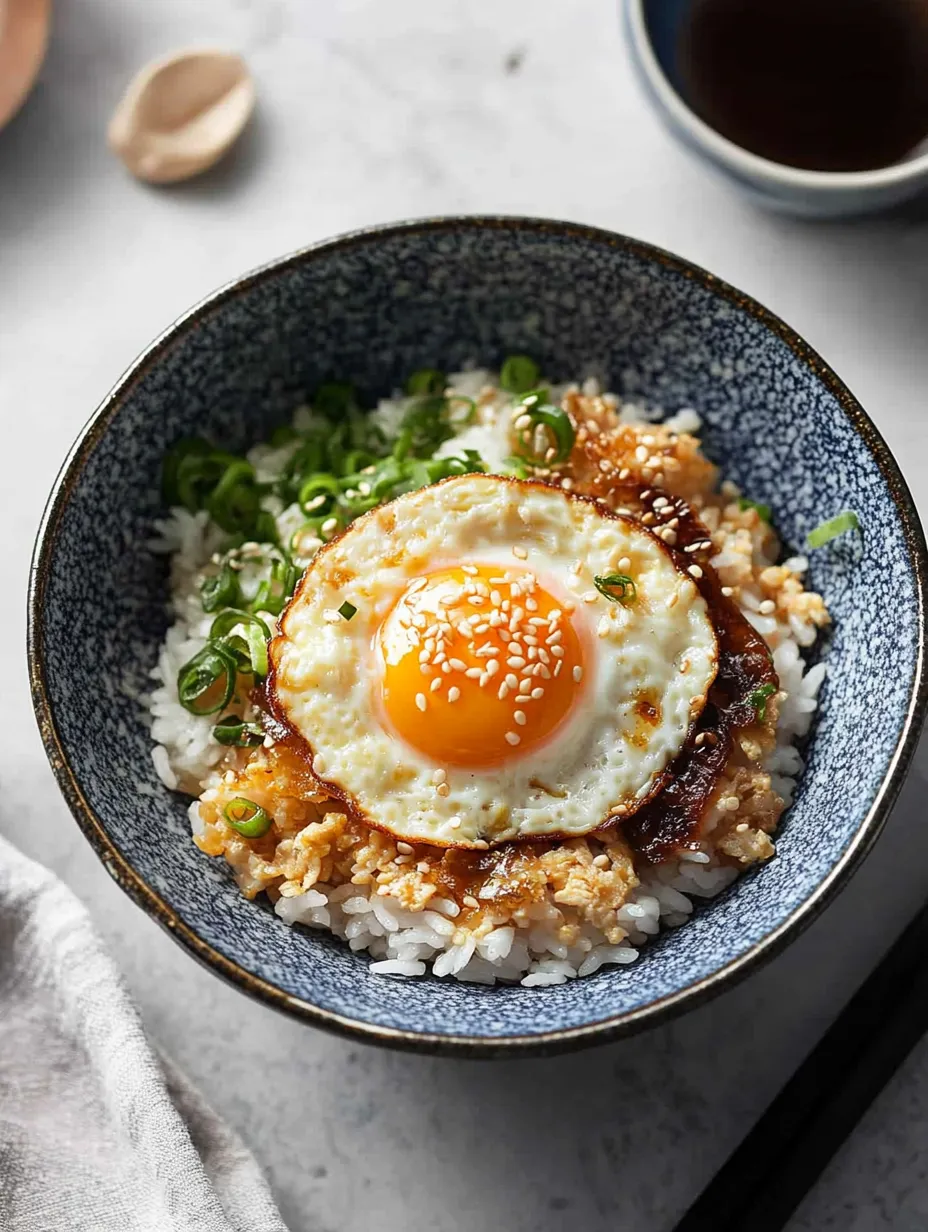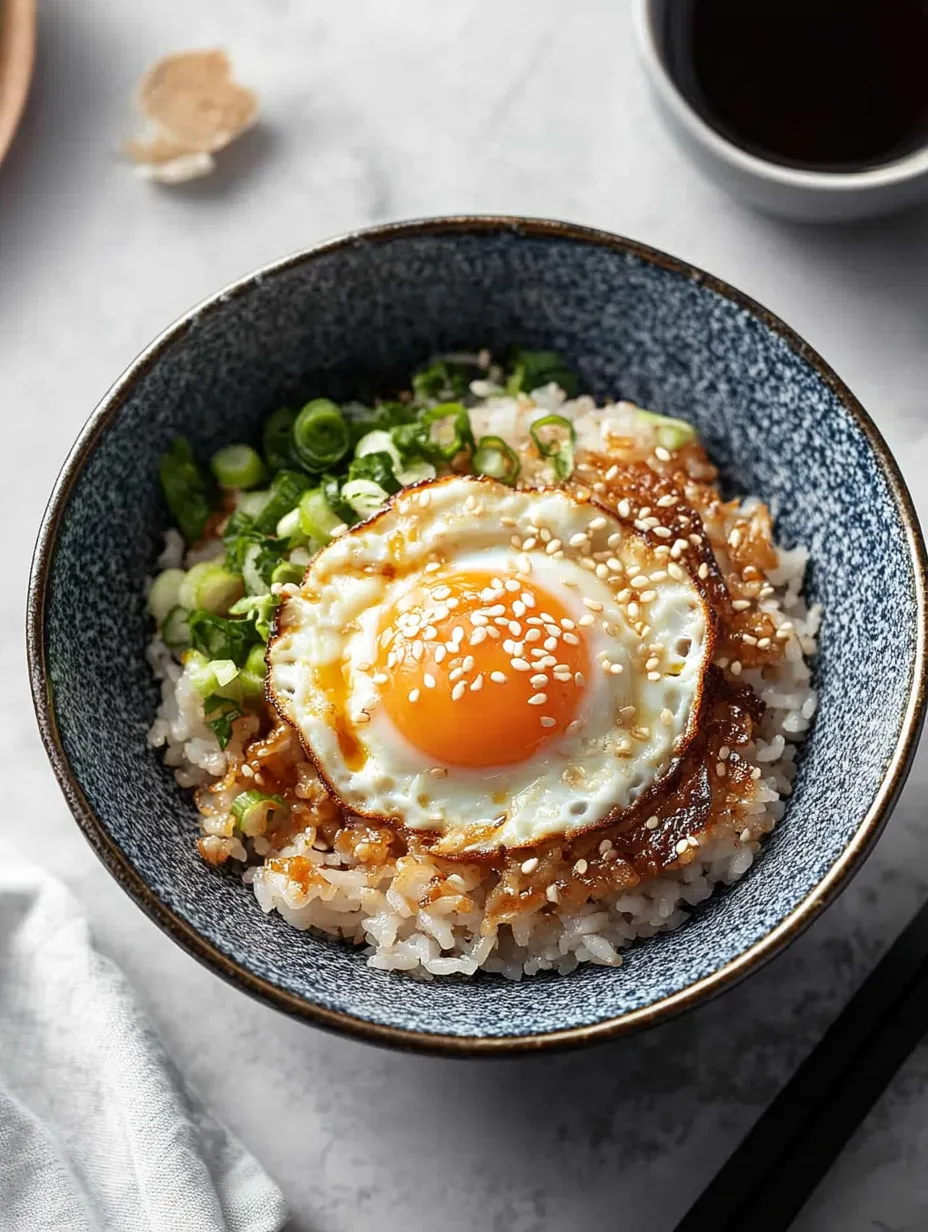 Save Pin
Save Pin
This satisfying 10-minute Korean egg rice (Gyeran Bap) brings together comfort and ease in every bite. A household favorite across Korea, this adaptable meal turns everyday items into a fulfilling dish that works for breakfast, lunch, or dinner.
I whipped this up during a crazy busy week when I needed something fast but filling. The moment that runny yolk mixed with the warm rice creating that silky coating, I was hooked. It's now my favorite quick fix when I'm short on time but still want something homemade.
Ingredients
- Short grain rice: Makes up the base of this meal, giving you that nice clingy texture that soaks up all the goodness; it's a Korean staple but you can swap in jasmine rice too
- Egg: Adds richness and protein; once the yolk breaks into your rice, it turns into a natural velvety sauce
- Butter: Gives a wonderful richness that lifts plain rice to something special; grab the good stuff if you can
- Sesame oil: Adds that nutty, fragrant touch that's so important in Korean food; always go for the toasted kind for best flavor
- Soy sauce: Brings that deep savory kick; try to find naturally brewed ones for better taste
- Sesame seeds: Add a nice crunch and look pretty too; toast them beforehand to bring out their nuttiness
- Green onions: Give freshness and a pop of color; pick ones with sturdy stalks and bright green tops
Step-by-Step Instructions
- Get your rice ready:
- Mix hot cooked rice with butter in a bowl, stirring until the butter completely melts and covers all the grains. This step builds the tasty foundation of your meal. The hot rice should melt the butter without needing extra heat. Put it in a serving bowl where the edges will keep all your toppings from spilling over.
- Fix up the egg:
- Warm a nonstick pan over medium heat with just enough oil to lightly cover the bottom. Crack your egg into the pan, making sure not to break the yolk. Let the whites cook until they turn white and firm up around the edges while keeping the yolk runny. To speed things up without burning, splash some hot oil over the yolk. This trick helps cook it evenly while keeping that gooey center.
- Put it all together:
- Put your freshly cooked egg right on top of your buttered rice, making it look nice. Center the egg on your rice mound so when you break the yolk, it'll spread evenly throughout. The white egg sitting on the rice looks really appetizing.
- Add flavors and toppings:
- Pour sesame oil around the edges of the bowl, letting it run down into the rice. Scatter sesame seeds all over the top. Sprinkle chopped green onions for color and freshness. Then drizzle soy sauce over the egg, letting it soak into the rice below. You can adjust how much of each topping you use based on what you like.
- Stir and dig in:
- Break the egg yolk and mix everything up well. The runny yolk will blend with the soy sauce, butter, and sesame oil, creating a rich, tasty sauce that covers every bit of rice. Make sure to scrape the sides and bottom to mix in all the flavors evenly.
 Save Pin
Save Pin
That toasted sesame oil really makes this dish special. I found this out the hard way when I skipped it once and the flavor just wasn't the same. Its nutty aroma can't be matched by anything else and always reminds me of my grandma's kitchen where that smell meant something tasty was coming.
Cultural Background
Gyeran Bap holds a warm spot in Korean food traditions as an everyday comfort meal. This dish came about as a practical way to make a filling meal with just a few ingredients when food was scarce. Korean families often make it as a quick after-school snack for kids or a late-night bite. The rice-egg combo has always been valued for giving energy and nourishment in a simple form. These days, people still love it not just because it's quick to make but because it brings comfort through familiar tastes and textures.
Tasty Alternatives
While the basic version tastes great on its own, Korean egg rice welcomes many extras that can totally change the experience. Adding kimchi brings spicy tang and good bacteria, while mixing in canned tuna gives you more protein and savory flavor. Sprinkle on some roasted seaweed flakes (gim) for ocean taste and healthy minerals. To make it more filling, throw in some diced avocado for creaminess or cooked veggies like carrots, spinach, or zucchini for nutrition and color. These options let you change up the dish based on what's in your fridge, making it great for using up leftovers creatively.
 Save Pin
Save Pin
Keeping It Fresh
Korean egg rice tastes best when you eat it right away while the egg's still warm and everything has the perfect texture. If you need to save leftovers, try to keep the parts separate when possible. Store cooked rice in an airtight container in the fridge for up to three days. When warming it up, sprinkle some water on top before microwaving to bring back moisture. If you're meal prepping, get the rice and toppings ready separately, and keep the sliced green onions in a container lined with paper towels to keep them fresh. Cook the egg fresh just before eating for the best taste since reheated eggs usually get tough.
Common Recipe Questions
- → How do I cook short-grain rice?
First wash the rice in cold water until it runs clear. If you've got a rice cooker, that's easiest. For stovetop cooking, let the rice soak for 20-30 minutes, then cook it with water until everything gets absorbed. Lastly, fluff it with a fork before serving.
- → Can I use other types of rice?
For sure, you can swap in jasmine rice or whatever you've got in your pantry, though the dish might taste and feel a bit different from the original.
- → What are some recommended toppings?
You can throw on some spicy kimchi, sliced avocado, crunchy seaweed flakes, a bit of canned tuna, or any quickly cooked veggies to add more flavor and nutrients.
- → How do I make crispy-edged eggs?
Pour in plenty of oil and cook your eggs at medium heat until you see the edges turn golden and crispy all around.
- → Can I make this dish vegetarian?
Absolutely. Just swap out butter for a plant-based option and check that your soy sauce doesn't contain fish products. Toss in veggies like quickly cooked spinach or zucchini for extra flavor.
